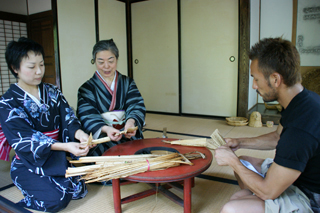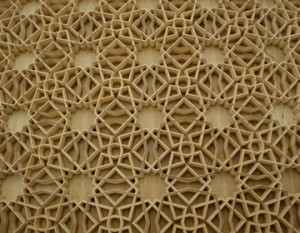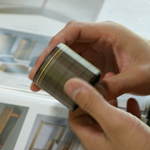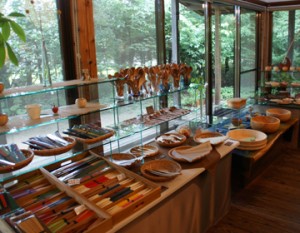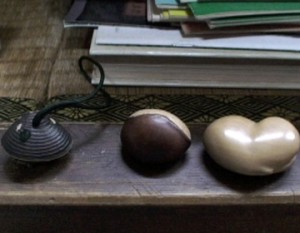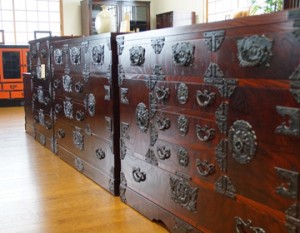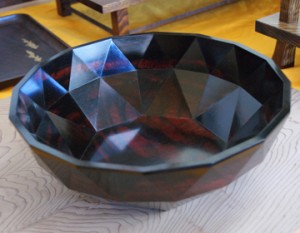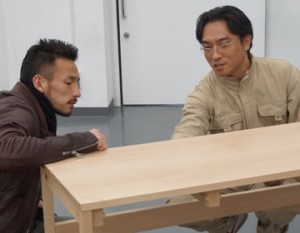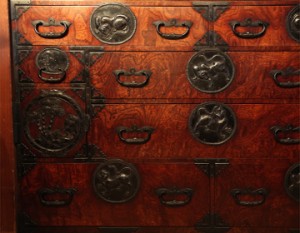Craft art inspired by Bruno Taut, the architect
”Takekawa (bamboo bark) Weaving” is literally a craft where bamboo bark is women. Bamboo bark is stripped into fine strands, made into a roll and woven using a needle. Sturdy baskets can be made with this technique. You may think that bamboo crafts have been in Japan from ancient times, but to our surprise, ”Nishi-Joshu Takekawa Weaving” in Gunma was started by a German architect.
The creator of ”Nishi-Joshu Takekawa Weaving” is Bruno Taut, a world renowned architect who stayed in Japan since 1933.
Taut noticed the craftsmanship involved in making ”tabi” or Japanese sandals made of straw in Takasaki, Gunma, and came up with the idea of creating household items using the technique. Bread baskets and yarn baskets designed by Taut himself are still in existence today. Their simple natural color evoke a sense of sturdiness and artistic beauty.
Inheriting the resurrected culture

The art of ”Nishi-Joshu Takekawa Weaving,” however, died out once in the past. The person who brought back it back to life is Ms. Mie Maejima whom we visited. Ms. Maejima was captivated by the charm of ”Nishi-Joshu Takekawa Weaving” 25 years ago. She visited old craftsmen to ask them to teach her the skill, studied old documents, and even made original tools needed for weaving. Wanting many people to know about this craft, she is now engaged in teaching others about the technique.
Ms. Maejima taught Nakata the skill of weaving.
Looking at the finished product, Nakata was fully satisfied saying, ”Perhaps the combination of my work and a wind chime would make be great in the summer, making the room feel cooler.”
”Nishi-Joshu Takekawa Weaving” pieces are sturdy; they have form that is refreshing; and add richness to people’s lives.



